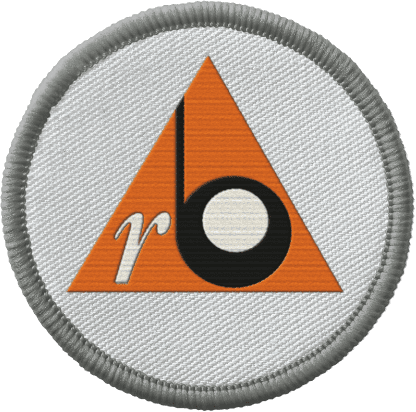I was photographing a book on Lord Howe Island in 1992. Lord Howe is a sub-tropical world heritage-listed island in the South Pacific Ocean, 700km off the coast of eastern Australia.
When considering the project, I was initially concerned about the light. It was flat sub-tropical light, unlike the strong oblique light we have in Tasmania. My solution was to shoot on stormy days when there was plenty of moody weather. The weather influences most things we do outdoors in Tasmania, and I have always used it as an element in my photographs. Explain the weather – it gives an extra dimension to photographs. And so, when it blew a gale on Lord Howe, I was in my element. I went chasing rainbows in the rain from a Cessna 172.
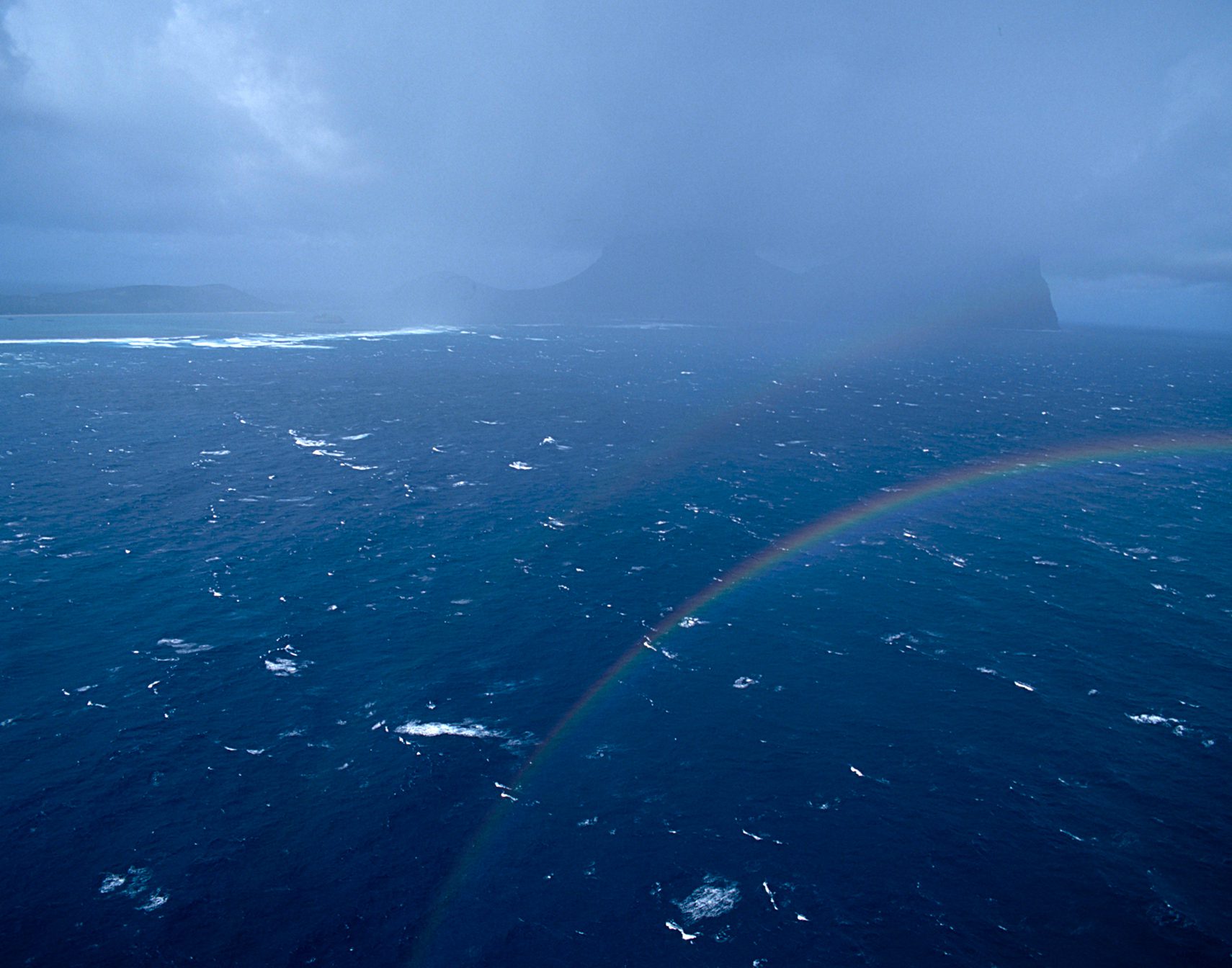
On the northern end of Lord Howe Island is Mount Eliza. It is a rocky, steep climb, that rises 147 meters above sea level. In Spring and Summer, tropical seabirds called Sooty Terns nest along the trails and the summit. While I was climbing Mount Eliza, some Sooty Terns took an interest, and while they were trying to land on my head, I photographed their approach with a wide-angle lens just as they were about to land. It reminded me of Alfred Hitchcock’s famous film.
Another afternoon while shooting aerial photographs, I flew out to Ball’s Pyramid. Ball’s Pyramid is a volcanic rock spire, 23km southeast of Lord Howe. It rises 551m above the sea and is a haven for nesting seabirds. A silhouette was my preference to dramatize this famous rock. I placed the sunlight behind the rock and Lord Howe at the upper left, identifying the location.
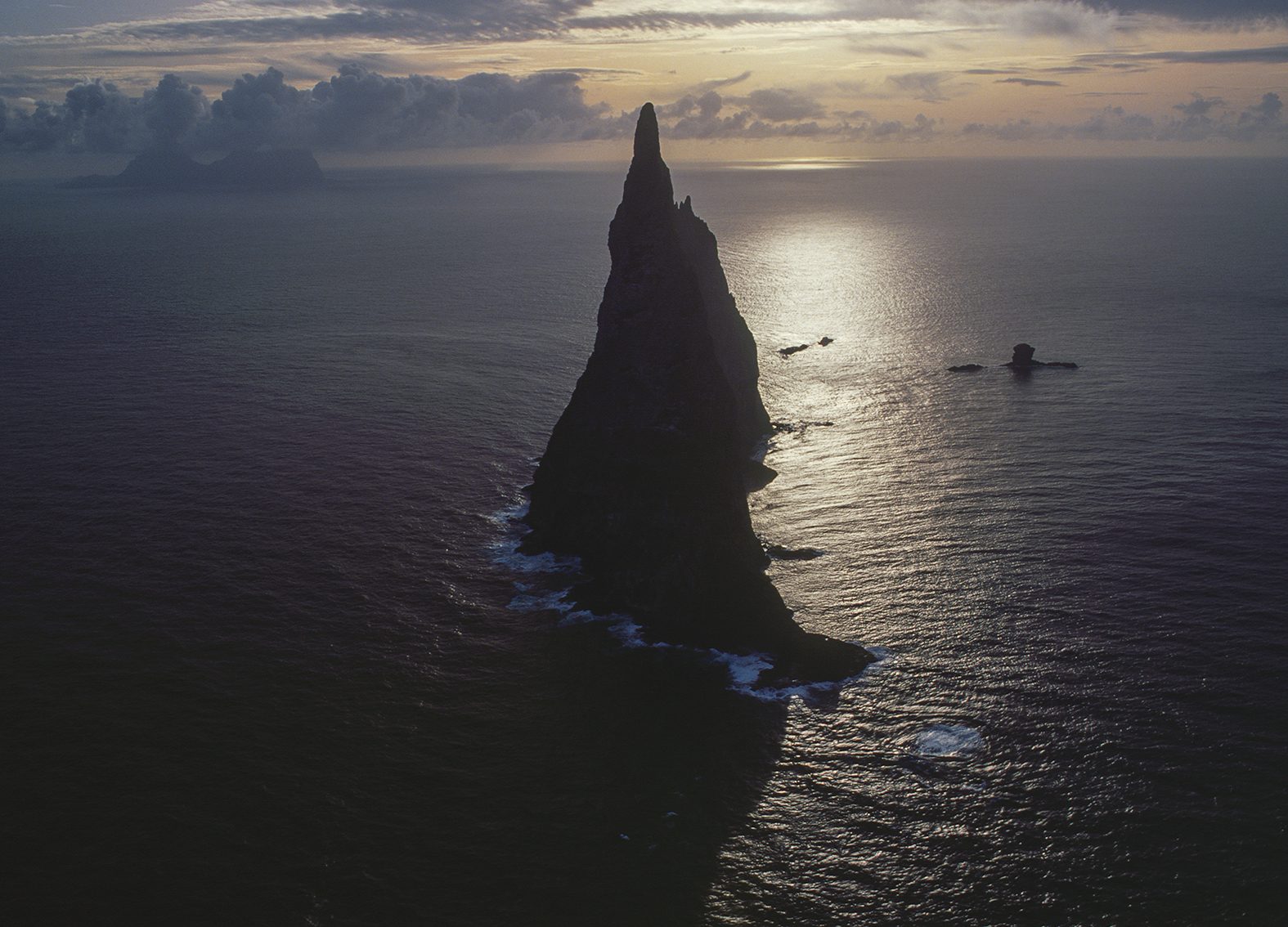
Lord Howe Beneath the Surface
To capture Lord Howe Island, I had to photograph it from the air, the ground and under the sea’s surface. Lord Howe is home to the world’s southernmost tropical coral reef. On the reef, there was a famous fish called Albert. Albert lived in the lagoon, and locals thought he should be included in the book because he was a local identity. After finding and photographing Albert, I realised that just one fish would not be enough. I needed more. I was told that reef sharks and other fish come into the lagoon at dusk.
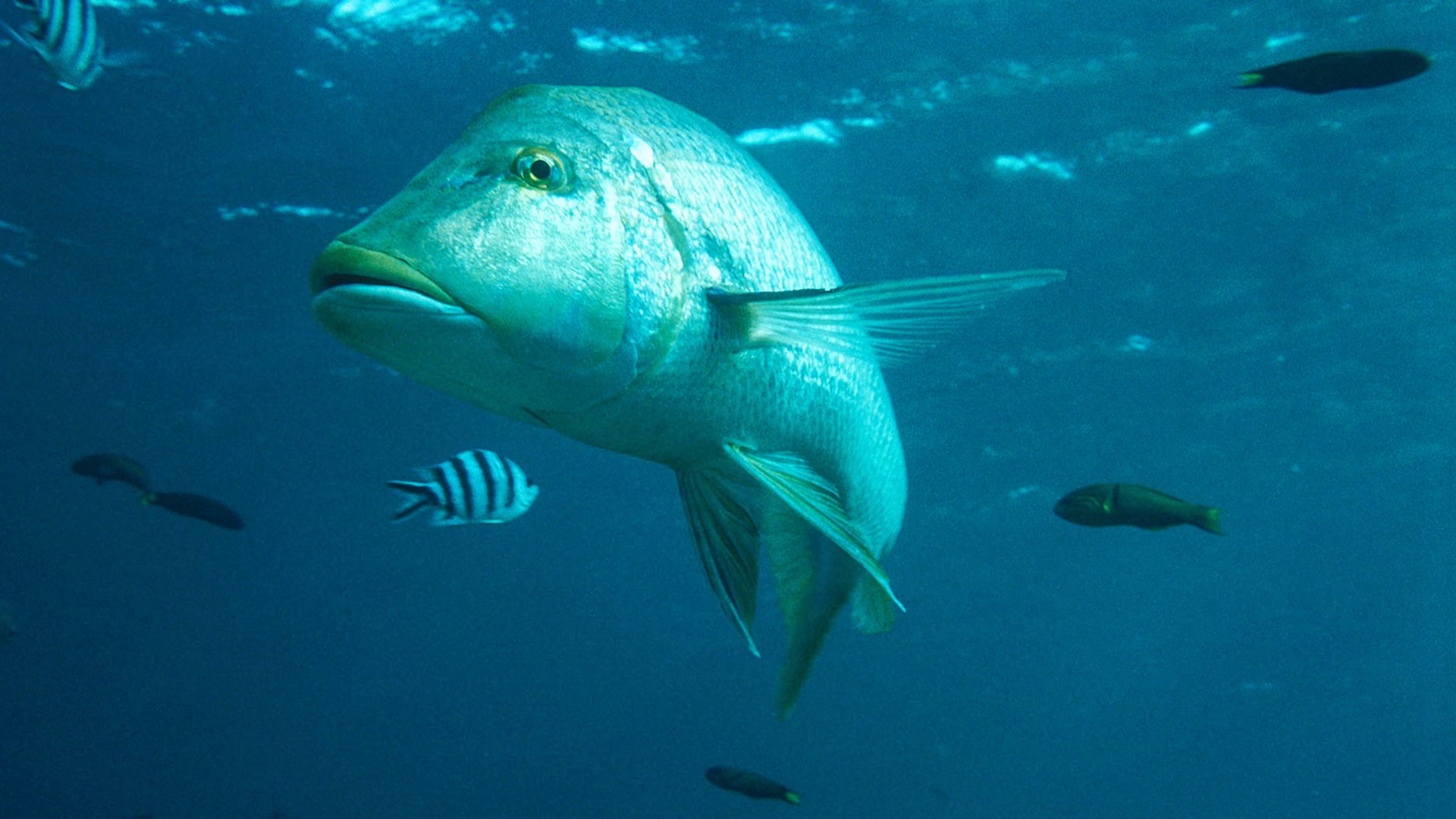
I decided I should jump in on dusk with my Nikonos underwater camera and a flash unit, which I would need to capture the images in the low light.
The local dive master took me out. He dropped some burly over the side (that’s bait scattered into the water to attract the sharks). I dropped to the bottom of the lagoon and waited.
At first, it was hard to see the sharks because they were grey, and they instinctively circled me in the grey distance at the edge of my vision.

I waited, ready to take the shot, but my camera was soon knocked out of my hands by a shark rocketing in, unseen, from behind me. He had been attracted to my flash unit’s bright red ‘ready light’. My surprise turned to concentration as I re-assembled the unit and noticed that I was surrounded by reef sharks. I had set the flash exposure to be two stops under the ambient exposure, which I thought would stop the subject but hopefully record enough blur to show the speed of the sharks.
I didn’t have long to wait before this big shark came almost straight at me, and I had time to measure a single frame. I was delighted with the result. You can see the current in the weed and the white caps on the surface caused by the breeze. I surfaced and was out of the water while I was still ahead of the game.
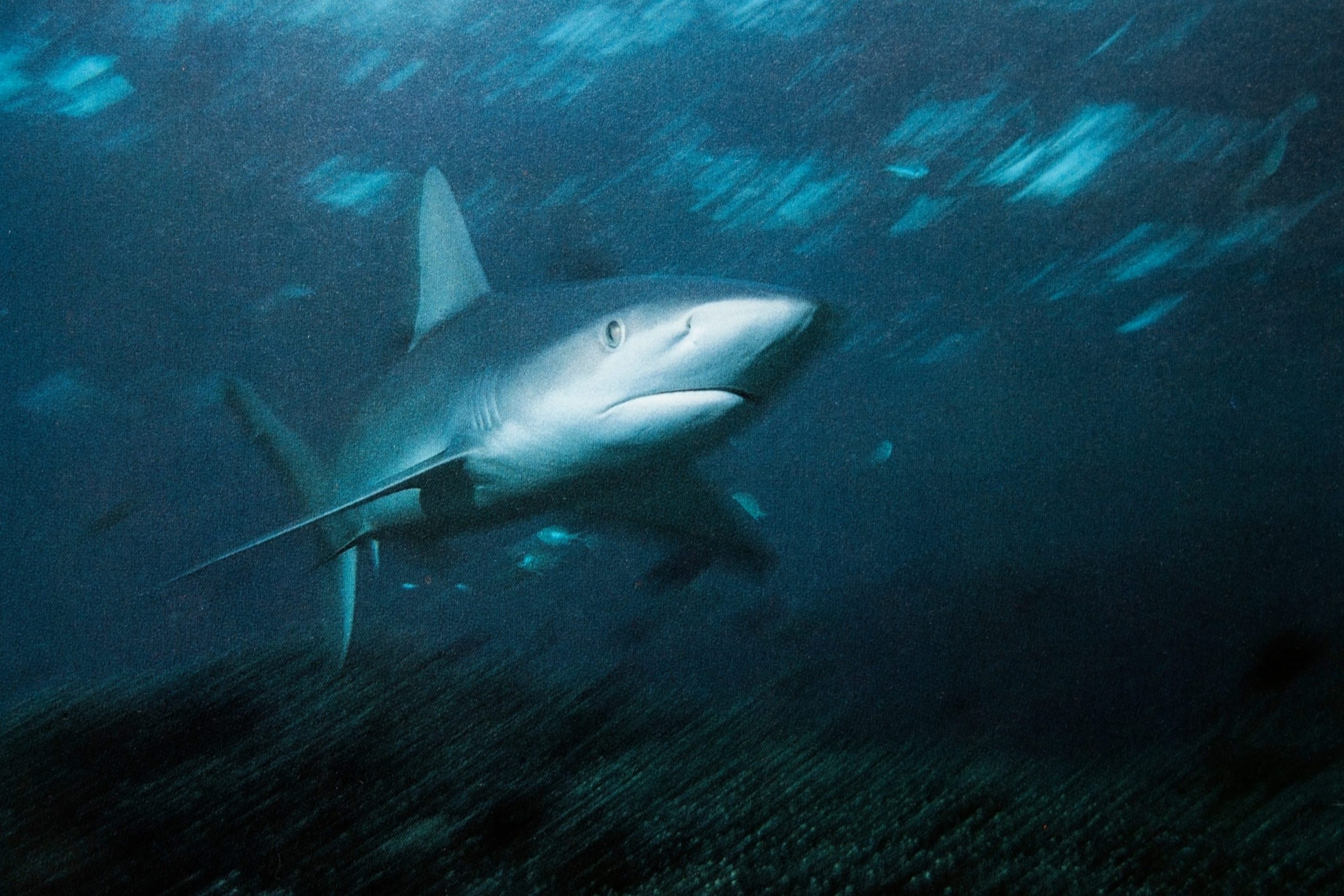
Lord Howe: World Heritage Island was a 72-page hardcover coffee table book containing 61 coloured photographs of this incredible landscape. Bill Shed, owner of one of the major Lord Howe Island Resorts, and I published it for his guests.
A selection of Richard’s other books are available in the shop. To purchase any of the prints in this article, please get in touch with Richard for options.
